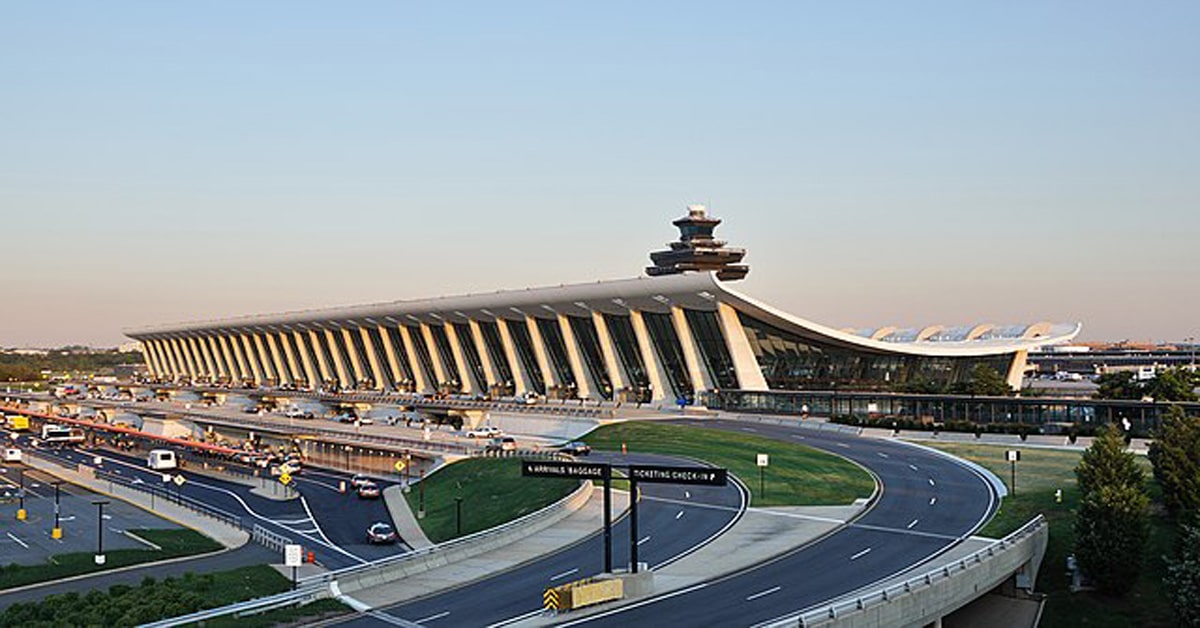7 Largest Airports in the World Often Exceeding the Size of Countries
Believe it or not, the largest airports in the world cover hundreds of square kilometers and are larger not only than Mumbai, Manhattan, the Maldives, and Singapore but also the entire country of Bahrain. We know imaging this scale is hard, especially considering that you might have to go through this massive space all by yourself, which is quite stressful when you rush to your connecting flight.
But actually, these airports are designed to provide us with advanced comfort. Therefore, instead of stressing out, you can just take a deep breath, follow the airport navigation signs, and enjoy the amazing amenities. That’s all you need to realize that visiting the largest airports in the world is an unforgettable experience.
Largest Airports in the World
1. King Fahd International (DMM)
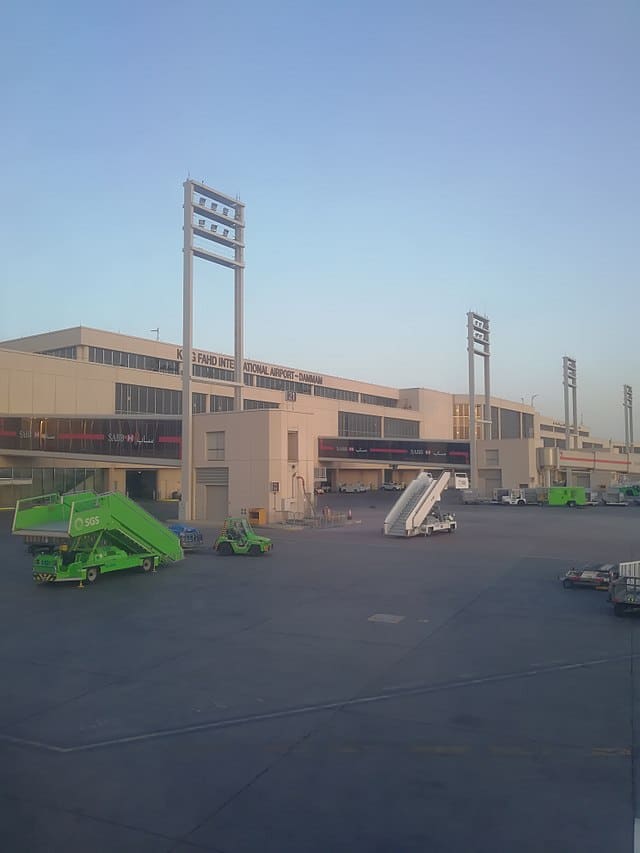
Considering that King Fahd International Airport in Saudi Arabia (Dammam) covers an area of 774 square kilometers, it’s the largest airport in the world. With that in mind, it’s not surprising that the airport is larger than the world’s most populous city Mumbai. King Fahd International was once a United States air base, but the airport started to handle both international and domestic flights and exclusively served private airlines in 1999.
Although it has a leading position among the largest airports in the world, King Fahd International occupies only about 6% of the total size of the airport, hosts up to 12 million passengers a year, and therefore ranks third in terms of passenger volume. The airport includes 3 different terminals and 6 floors, where you will find gift shops, restaurants, banks, airline lounges, a business center, a medical center, a hotel, and many other well-equipped spaces.
The entire 25.00 m² of the airport is reserved for the exclusive use of the Saudi royal family and government officials. Among other luxurious amenities, here you will hit upon a 2000 prayer-capacity mosque and gardens decorated with fountains.
2. Denver International (DEN)
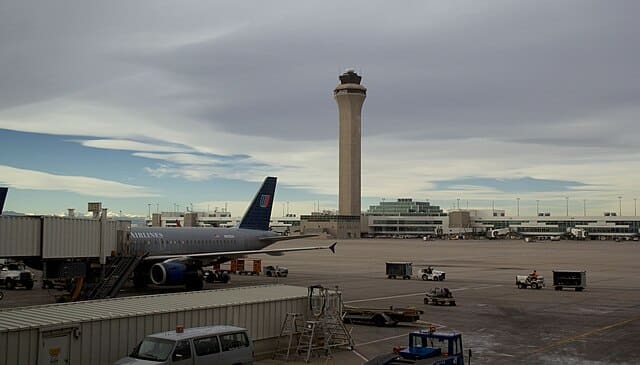
The 137.7 square kilometers Denver International Airport, located in Colorado, has been operating since February 28, 1995. As hard as it is to believe, the surface area of the Denver airport is twice the area of the island of Manhattan so it’s not surprising that it became one of the largest airports in the world.
In addition to being the second largest airport in the world, Denver Airport is also one of the world’s busiest in terms of passenger traffic which serves approximately 25 airlines and more than 215 destinations. To facilitate the seamless process of air traffic, the airport has 6 runways spanning 4,800 meters, the longest in North America and the seventh longest globally.
From the inside part of the airport, visitors can enjoy views of the Rocky Mountains, art installations, sculptures, murals, and interactive exhibits. Besides, you can take a ride on an underground train and relax in the spa center. That’s not to mention its 150 shops, premium lounges, restaurants, gaming areas, business centers, and hotels. And if you’re lucky enough, maybe you can even get the chance to meet the legendary Nikola Jokić or other members of the Denver Nuggets team during their travel flights.
3. Dallas/Fort Worth International (DFW)
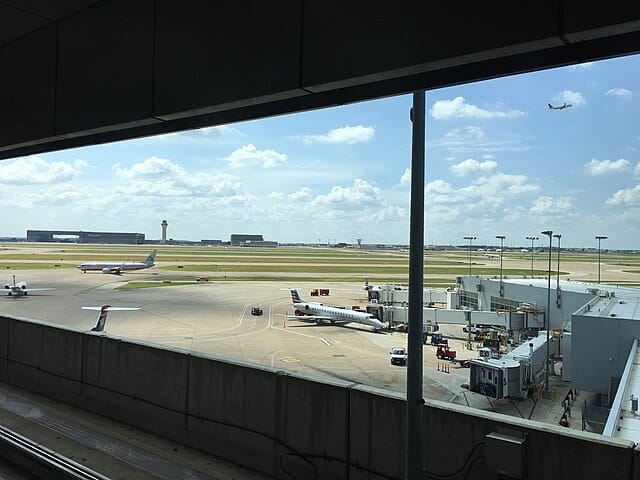
With its 78 square kilometers, Dallas Fort Worth has been the third largest airport in the world since January 13, 1974. Initially, only 9 airlines operated commercial flights at the airport. But soon this number tripled, and with 72.2 million passengers transported during the year, As a result, Dallas Airport became the largest airport in the world which is also one of the busiest ones.
Today, Dallas Fort-Worth International Airport serves more than 28 airlines and connects more than 260 destinations worldwide. Along with domestic and international flights, the airport serves more than 22 cargo airlines and therefore, it plays a crucial role in global cargo transportation.
You won’t be bored during the transfer time at Dallas Fort Worth International Airport, since here you will find multiple shops and restaurants along with a museum of aviation history, a shopping center, a spa, lounges, and business clubs. What’s more, if you prefer a comfortable rest and a quality sleep, there are also 2 hotels located on the territory of the airport.
4. Istanbul Airport (IST)
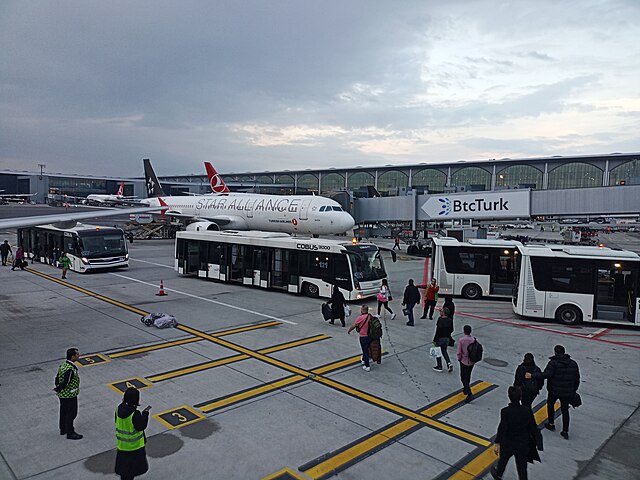
Istanbul Airport opened in 2019 and became the largest international airport in Turkey, as well as one of the largest airports in the world. With that in mind, it’s no wonder that it fascinates the passengers with a wide range of services. Istanbul’s modern terminal has 6 runways and a 90-meter air traffic control tower. It covers 76.5 square kilometers and has a capacity of approximately 90 million passengers annually.
The construction of the Istanbul airport began with an investment of about €10.2 billion and soon became the largest infrastructure project in Turkey. According to confirmed information, the airport continues to develop and plans to receive 200 million passengers annually soon.
Since its opening, Istanbul Airport has become the global hub for Turkish Airlines. Besides, it is home to many other international airlines serving more than 300 global destinations. Along with the runway infrastructure, Istanbul Airport also has a cargo terminal that covers 165,000 square meters.
Considering the location of Turkey, a large number of connecting flights to Europe and Asia go through Istanbul Airport. As a result, sometimes the transfer times exceed several hours. Still, the airport is focused on creating comfort for passengers, not only with a variety of lounges but also with shops, restaurants, and even a hotel complex.
5. Orlando International (MCO)
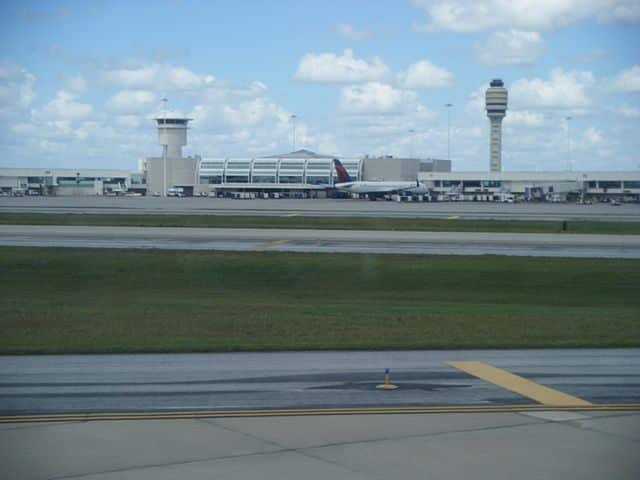
Next, we’re returning to the US, and specifically to the state of Orlando, to introduce you to one of the other largest airports in the world. As a matter of fact, Orlando International (MCO) spans 51.8 square kilometers and is located about 10 kilometers southeast of the center of the state. Along with being one of the largest airports in the world, it’s the 7th busiest airport in the United States.
The airport includes 4 terminals, 3 runways, and the operating bases of such airlines as American Airlines, JetBlue, Southwest, Spirit, and Avelo. As impressive as it may sound, here a total of 44 airlines operate an average of 850 flights daily to more than 200 destinations around the world.
Orlando International Airport’s South Terminal is equipped with excellent amenities and includes more than 120 stores, restaurants, a variety of shopping facilities, and luxury boutiques. This means that whenever you’re at this airport, you have a chance to stay in such luxurious hotels as the Hyatt Regency, Marriott’s Grande Vista, and Hilton Orlando hotels.
6. Washington Dulles International (IAD)
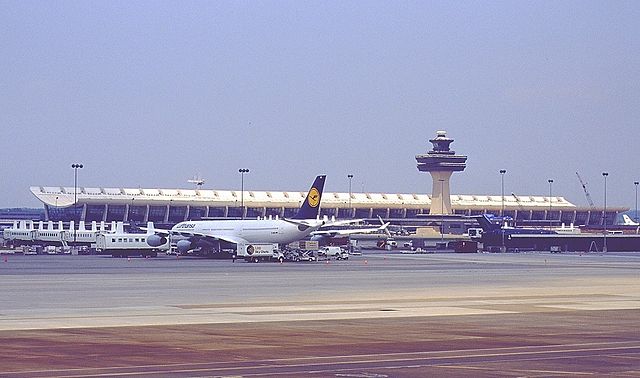
Established in 1962, Washington Dulles International Airport, sometimes referred to simply as Dulles International Airport, is another one on our list of the largest airports in the world. In particular, the airport occupies a total area of 48.6 km².
The airport was named after John Foster Dulles, who served as Secretary of State during the Eisenhower administration in 1953-1959. It’s a well-known fact that on the opening day of the airport, US Presidents Eisenhower and John F. Kennedy attended the impressive aerial performance along with the general public.
Washington Dulles International Airport is the main hub of operations for United Airlines. However, other airlines such as United, American, British Airways, Delta, Southwest, Aer Lingus, South African Airways, JetBlue, and Lufthansa are also on the runway. After this list, it is not surprising that Washington Dulles International Airport is not only one of the largest airports in the world but also the fourth-largest in the United States.
Dulce International Airport is home to 6 interconnected terminals and 4 runways for aircraft of various sizes, but the airport also offers a wide variety of fine dining and shopping options. Along with currency exchange offices and ATMs, here you will also find conference facilities for business travelers, various lounges, and medical facilities for emergencies.
7. Beijing Daxing International (PKX)
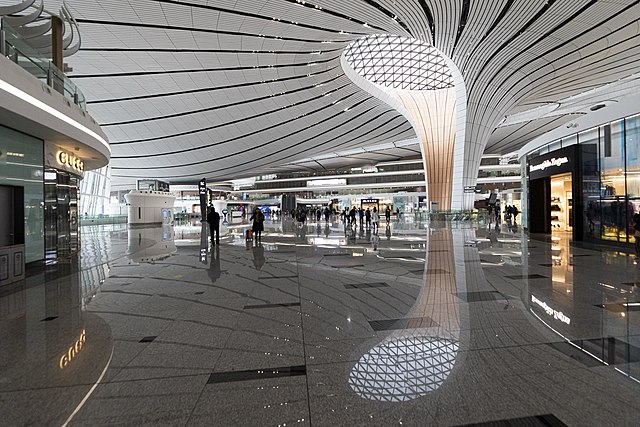
Our list of the largest airports in the world has come to an end, but Beijing Daxing Airport, located in China, still manages to impress us and unquestionably takes 7th place as one of the largest airports in the world, with an area of 46.6 square kilometers.
Beijing Daxing Airport began operating at full capacity in 2019 and soon became the hub of three well-known Chinese airlines, Air China, China Southern Airlines, and China Eastern Airlines. In fact, the airport has a terminal area of 700,000 square meters.
Beijing Daxing Airport’s distinctive 5-pointed star design attracts the attention of passengers worldwide as it carries out 620,000 take-offs and landings every year.
Beijing Daxing Airport efficiently operates 4 parallel runways and provides passengers with access to a variety of well-equipped lounges to ensure the utmost comfort. Visitors to this airport can enjoy a variety of shopping and dining establishments that will satisfy everyone’s taste, from budget to high-end offerings.
Final Thoughts
As you can see, these 7 largest airports in the world offer global connectivity, convenience, and maximum comfort. But there is no escaping the fact that such a scale comes with several challenges, among which the stress of showing up on time for connecting flights is most prevalent. Nevertheless, we can visit such large-scale airports with the best experience if we focus mainly on checking our gate numbers properly on the flight departure screens at the airports.
When navigating the largest airports in the world, the rule of thumb is to find your gate before visiting the shops and restaurants. Try to check regularly for flight changes and if necessary, don’t hesitate to ask the airport employees for help in getting information.

Nato is a content writer and researcher with a background in psychology who’s eager to explore the wonders of nature. As a travel enthusiast and animal lover, she hopes to inspire others to discover and cherish the beauty and importance of the natural world.

